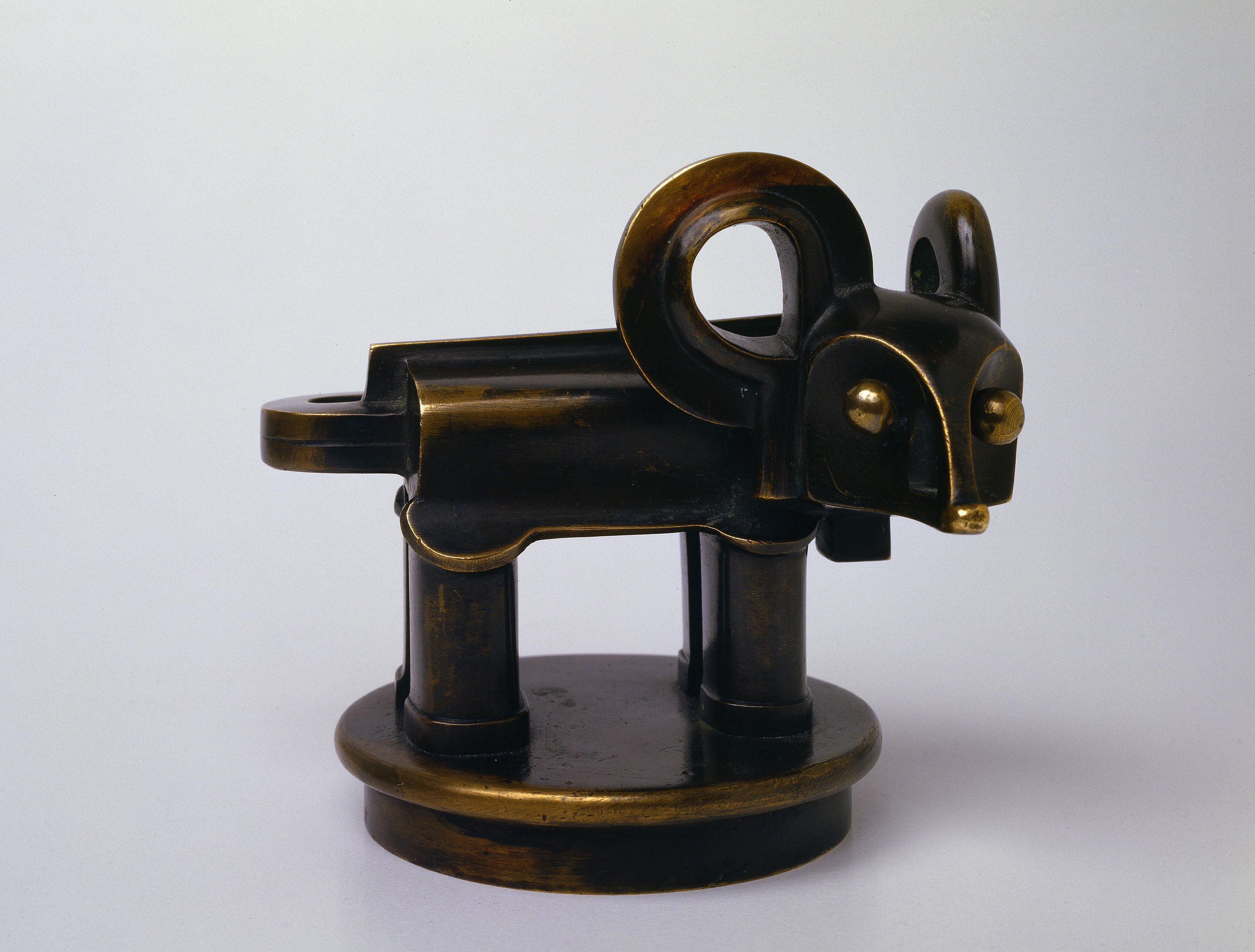Rudolf Belling
mythical animal (listening animal), 1923
Artist
Rudolf Belling
Title
mythical animal (listening animal)
Year of creation
1923
Technique and dimensions
bronze, 9.5 x 11 x 9 cm
Year of acquisition
2004
Acquired as a gift to the Friends of the National Gallery
Movement and dynamics also represent mobility and traffic in the context of the modern city. Since the end of the war, the automobile has played an increasingly important role, both as a commercial vehicle and as sports equipment. In 1921, the automobile traffic and practice road (AVUS) was inaugurated in Berlin, an intersection-free “prototype of all motorways” in Germany. A car race took place for the first time on its 9.8 km long race track on September 24th […]. At the same time, Rudolf Belling and the Luckhardt architect brothers were commissioned to design an advertising sculpture for car tires for the Pneumatik Harburg-Wien brand, which was installed in the south curve in the form of an approximately seven meter high figure - racing driver and guardian angel in one [...].
With the Olex gas station, Belling was supposed to continue the automobile theme as well as with his Horchtier, designed in 1923 but never put into production, which was intended as a hood ornament for a Horch, the forerunner of the Audi (which explains the circular screw attachment on which the animal stands). In its geometric body there are amusing echoes of the Nollendorfplatz design [...], while the curve of the large ear, a visual pun on the car's brand name, brings to mind the AVUS. Individual drawings and lithographs created in Turkey [...] ultimately showed that tectonics and tempo influenced Belling's repertoire of expression and form until the 1960s. Wolfradt's conclusion from 1924 remained relevant throughout his life: "Belling [...] is a dogma-breaker out of the pace of our reality conquered for sculpture."
Source: Belling, Sculptures and Architects, National Museums in Berlin, 2017.
